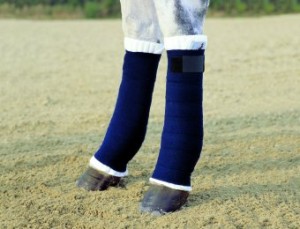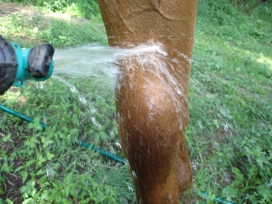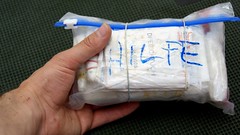Stable Management – First Aid Care

Horse supplies run the gamut from grooming products to nutritional supplements. But there is an essential horse supply that you shouldn’t leave your barn, or your saddlebag without. Horse first aid pack might be just the thing that could save your horse’s life. Hollywood had often dramatized the situation wherein the rider shoots his horse because it is injured. No good comes from killing a horse over a minor injury if you could put it out of its agony without pulling the trigger. Plus, you know from experience that no matter how thought out or planned an outing might be, there are just some things that go awry. It’s not being paranoid, it is being prepared. Your preparation might help prevent your ride from turning into a Hollywood drama.
Some simple yest effective items should be on hand for first aid treatments.
- Wound Cleaning items – Anti- bacterial scrubs, anti-septic scrubs and mild disinfectants come in handy for treating minor scrapes and abrasions. Minor scrapes and abrasions to wounds, disinfectants are good cleansers. It is important to read and follow the directions as some disinfectants are very drying nc may cause more damage than good. Antiseptic scrubs and swabs become useful for disinfecting wounds in the absence of water. These are excellent substitutes for disinfectants because they clean wounds with the same efficiency, but

Cold Hosing Will Reduce the Heat and Inflamation in a Splin without the need for water.
- Ointments or wound powders are also worthy additions to your kit. They can prevent entrance of new bacteria inside the wound and speed up the healing process. However, be sure to use ointments, powders, and creams that have been approved by your vet.
- Wound dressings come in sterile individual packs and they are good for covering wounds and promoting healing. Kotex Pads (don’t laugh, they are absorbant and provide excellent clean wound coverings)
- Clean bandages and cottons. There should be a supply of bandages in your kit, or at least two with a wide breadth. They are good for stabilizing fractures, splints, and securing pads over bleedings. Speaking of bleedings, cotton wool and gauze are essential for preventing excess bleeding.
- Epsom Salts are good for soaking diseased hooves and feet.
- Petroleum jellies are good for chafing, minor burns, and skin sores
- Thermometer is an investment to add to your horse supplies. Expert riders advise to keep your thermometers clipped to the tail of your horse to avoid loss.
- Scissors, tweezers, forceps and a hoof pick/knife are tools you shouldn’t forget adding to your first aid pack.Aside from cutting bandages, they are also perfect for removing splinters and stones stuck in horses’ hooves.
- A fly repellent applied or sprayed on the wound lowers further infection or contamination risks considerably.
- added by Lynn Evans – Ours has a big jar baby diaper rash cream like Desitin (high zinc content and no perfum added). Also have a couple of rolls of vet rap to hold those bandages in place. A container of Bute, bottle of water and big seringe as well as all of the items you have already mentioned. A jar of SWAT is both a fly repellent and an antispectic ointment (great for healing those big bites that get all gross and crusty).
- added by Nanette Levine- I’d add Vetwrap or other similar product to the list. There’s tons you can do with this (I’ve even used it to support sprains I’ve suffered while riding). Also dosing syringe, duct tape, masking tape and towels.
Nanette Levin recently posted..
First Aid Kit Containers
The kit must be stored in a clean moisture resistant container or bag. It is important to use clean guaze and bandages
prevent aggravating any wounds. Consider using:
- Plastic zip lock bags. Stores that sell horse supplies carry items such as a plastic zipper bag. Aside from keeping tools, or grooming equipment, these are also good for storing first aid items.

 photo credit: michael pollak
photo credit: michael pollak - Plastic food containers. Tupperware and RubberMaid containers have excellent seals and come in various sizes. Aside from keeping possible contaminants out, you could also choose one that could fit in your saddlebag.
- Aside from these medications, there are some supplies which you can buy from equine stores and regular drug stores.
- Lastly, these first aid pack is just for providing your horse help in emergencies before the vet arrives. These are just for preventive measures, meaning they can’t cure your horse. It is still important to call a vet after applying first aid.





 Try these three powerful exercises to get strengthen your position.
Try these three powerful exercises to get strengthen your position.

I’d add Vetwrap or other similar product to the list. There’s tons you can do with this (I’ve even used it to support sprains I’ve suffered while riding). Also dosing syringe, duct tape, masking tape and towels.
I always carry homeopathic arnica, and also rescue remedy (a bach flower remey). Both are excellent for any kind of shock/trauma, however minor or sevre. Rescue remedy can be amazing with nervous travellers, excitement of horse shows, or general unfamiliar territory – even being away from the herd anxiety. Arnica (homeopathic, found at health store or some drug stores) is a wonderful remedy for everything from small bumps/bruises, to sore muscles/strains, to more serious injuries.
Thank you Zoe for the homeopathic side of things. I used to have a dog which we gave “Rescue Remedy” to. He was riddled with anxiety and it really helped. I also used some Valerie? Does that sound right? And I think sometimes, the owners, riders should supscribe themselves to some of these natural anxiety releivers as well. Lately I have been using lavender to help with relaxation as well as peppermint essential oils.
Thanks for your imput.
~Laura